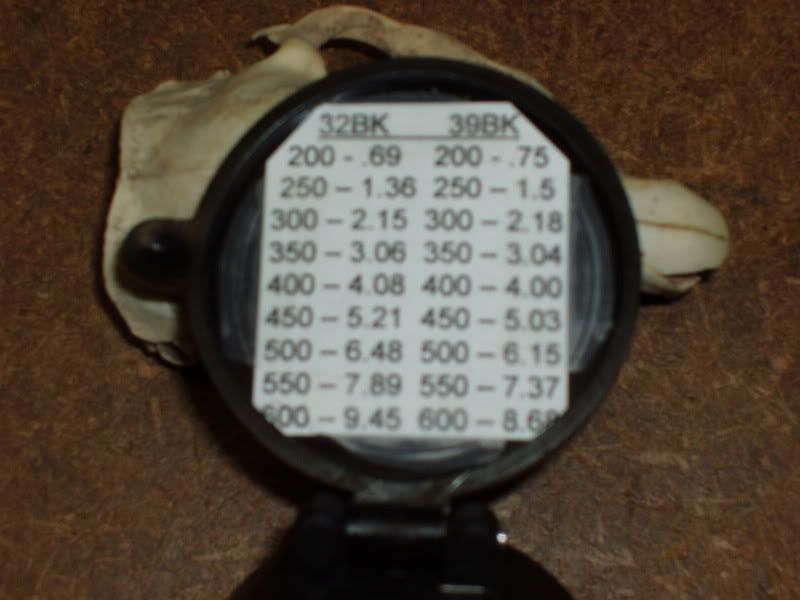Making your own custom 204 Come-Up Charts
Posted: Sat Mar 31, 2007 7:22 pm
If you want to make your own cool 'come-up' chart for your 204, it is easy to do and free to boot. You must have a chronogapgh to do this, know the real velocity and BC of the bullet(s) you're shooting.
My Sako 204 (Mdl75V) loves both the Sierra 32 and 39 gr Blitz Kings, and I shoot both in the field. In order to make first shot hits at long range every time, you must have a come-up chart so you can dial in the elevation for these shots, or you're just guessing with holdover.
If you download one of the free ballistic trial programs, compute the zero at every range out to where you want to draw the limit (for my 204 it's 600 yards), then check what the total amount of 'come-up' is at 100 yards, which is where I always zero my rifles that have either M1 or target elevation turrets. This gives you a constant 'zero' reference.
Write down the numbers, use a small font on your printer, use 'center', print, and then cut out and tape to the inside of your scope cover.
In use in the field, you simply use your laser rangefinder, get the range, then flip up your scope cap (assuming you're using either the Leupold units or Butler Creek), consult the range, note the come-up for that range, dial, allow for wind, hold dead-on for elevation, and shoot.
This is the same system our LR snipers in the military use, and it really works. We use the system on chucks, PD's, and ground squirrels, and it will amaze you making first shot hits on these small critters farther than most people shoot deer. After shooting small rodents at extended ranges, a coyote is like shooting a truck at 500 yards!
Below is a picture of the chart I just made for my 204, using two columns, one for each bullet weight I shoot. Sorry for the crappy photo, my digital won't focus that close. Give this a try, it's easy, cheap, and highly effective.

You'll note that although the 32gr shoots flatter at first, the 39 catches it and shoots flatter at long range, due to the higher BC of the heavier bullet.
My Sako 204 (Mdl75V) loves both the Sierra 32 and 39 gr Blitz Kings, and I shoot both in the field. In order to make first shot hits at long range every time, you must have a come-up chart so you can dial in the elevation for these shots, or you're just guessing with holdover.
If you download one of the free ballistic trial programs, compute the zero at every range out to where you want to draw the limit (for my 204 it's 600 yards), then check what the total amount of 'come-up' is at 100 yards, which is where I always zero my rifles that have either M1 or target elevation turrets. This gives you a constant 'zero' reference.
Write down the numbers, use a small font on your printer, use 'center', print, and then cut out and tape to the inside of your scope cover.
In use in the field, you simply use your laser rangefinder, get the range, then flip up your scope cap (assuming you're using either the Leupold units or Butler Creek), consult the range, note the come-up for that range, dial, allow for wind, hold dead-on for elevation, and shoot.
This is the same system our LR snipers in the military use, and it really works. We use the system on chucks, PD's, and ground squirrels, and it will amaze you making first shot hits on these small critters farther than most people shoot deer. After shooting small rodents at extended ranges, a coyote is like shooting a truck at 500 yards!
Below is a picture of the chart I just made for my 204, using two columns, one for each bullet weight I shoot. Sorry for the crappy photo, my digital won't focus that close. Give this a try, it's easy, cheap, and highly effective.

You'll note that although the 32gr shoots flatter at first, the 39 catches it and shoots flatter at long range, due to the higher BC of the heavier bullet.


